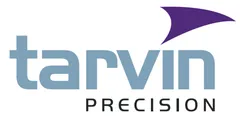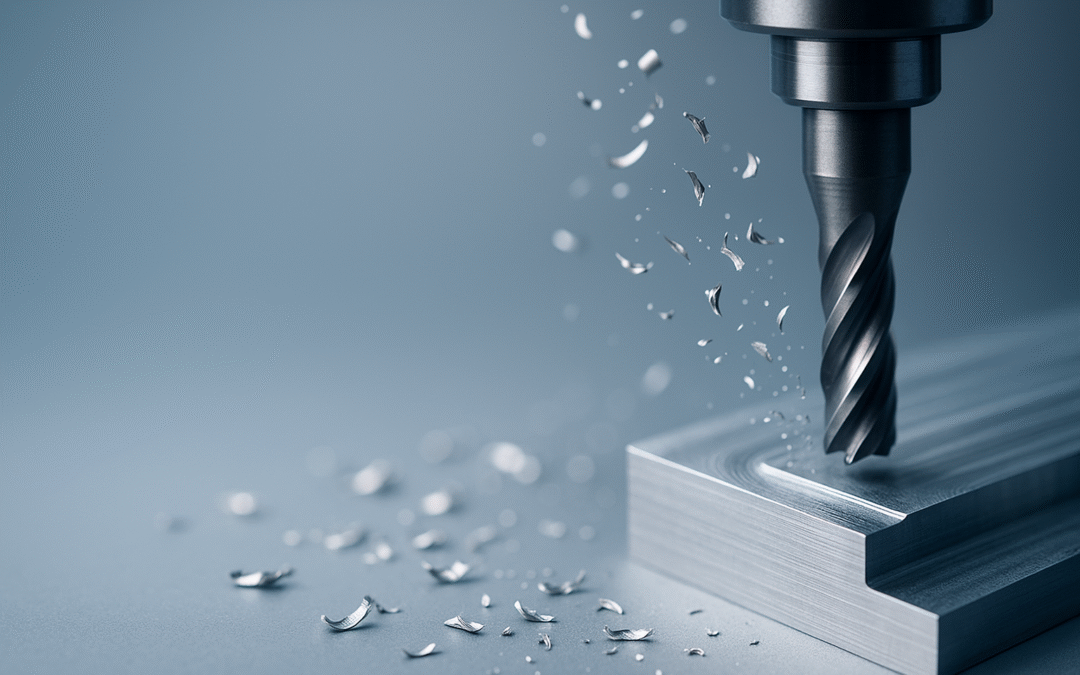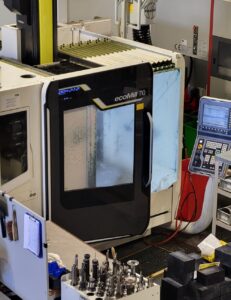When deadlines are tight, tolerances are demanding and internal capacity is stretched, subcontract CNC machining becomes the smartest way to keep programmes on track without compromising quality.
This guide explains what subcontract CNC machining is, when to use it, how to select a supplier and how to get the best results on price, lead time and performance. If you’re building a supplier roster or preparing an RFQ, you’ll find practical checklists, engineering tips and FAQs tailored to UK and European buyers.
What is Subcontract CNC Machining?
Subcontract CNC machining is the outsourcing of precision turning, milling and related processes to an external specialist who manufactures parts to your drawings and specifications. Instead of investing in additional machines, staff and inspection capacity, you buy the result: finished components that meet your quality, delivery and cost targets.
A capable subcontractor typically offers:
- CNC milling (3-, 4- and 5‑axis CNC milling)
- CNC turning (with or without live tooling, sub-spindle and barfeed)
- Mill‑turn and multi‑axis machining for complex prismatic parts
- EDM (wire and sink) for hard or intricate geometries
- Surface and cylindrical grinding for tight tolerance finishing
- CMM inspection and documented quality control
- Access to secondary operations such as deburring, bead blasting, heat treatment and finishing (anodise, passivate, zinc‑nickel, chem‑film, powder coat, black oxide)
Why Choose Subcontract CNC Machining?
Subcontract CNC machining lets you add capacity and capability on demand, without the capital outlay or permanent headcount. Treating a trusted precision engineering uk supplier as an extension of your shopfloor helps you compress lead times, de-risk schedules and keep your in-house team focused on core value-add work. Here is where this approach delivers the most benefit.
Flexibility
Ramp up quickly for a programme launch or seasonal demand without purchasing new machines or hiring operators.
Access to specialist capability
Tackle multi‑axis work, exotic alloys or tight GD&T callouts using a partner that does this every day.
Lead time resilience
Split work across internal and external capacity to compress schedules and reduce single‑point risk.
Consistent quality
Established subcontractors run proven processes, calibrated equipment and traceable inspection.
Better total cost
A right‑sized supplier can be more economical than carrying idle capacity in-house, especially for low-to-mid volumes.
Typical Industries and Applications
From highly regulated programmes to fast-moving product teams, subcontract CNC machining supports a wide range of sectors where compliance, traceability and repeatability matter. Whether it’s aerospace documentation and FAIRs, PPAP in automotive, clean handling for medical/scientific parts or NDT for energy projects, the requirements change, but the need for tight tolerances, reliable lead times and robust process control does not.
Aerospace & Defence
Housings, brackets, chassis, gear components, valve and actuator parts; documentation often to AS9100 processes and FAIR/FAI.
Automotive & Motorsport
Hubs, uprights, fixtures, drivetrain components; PPAP, ISIR, and serialisation where required.
Medical & Scientific
Instrument bodies, surgical tooling, precision stages, vacuum hardware; clean handling and material certs.
Energy & Renewables
Pump bodies, impellers, seals, gearbox parts; corrosion‑resistant alloys and NDT.
Electronics & Instrumentation
Heat sinks, enclosures, connectors; EMC-conscious design, tight profile and positional tolerances.
Materials Commonly Machined
Material selection is the fastest lever for performance, cost and lead time. The grades below are widely used in CNC machining; choose based on machinability, strength-to-weight, corrosion resistance and compliance needs. Equivalents and heat treatments can be specified to fine-tune properties.
- Aluminium: 6082, 7075, 6061, 2014 for strength-to-weight and high machinability.
- Stainless steels: 303/304 for general use; 316/316L for marine/chemical; 17‑4 PH for high strength with good corrosion resistance.
- Carbon and alloy steels: EN8 (080M40), EN24T (817M40), 4140/42CrMo4 for shafts, fixtures and load‑bearing parts.
- Titanium: Grade 2 for corrosion resistance; Grade 5 (Ti‑6Al‑4V) for aerospace and medical where strength-to-weight is critical.
- Copper alloys: brass (CZ121) for connectors and fittings; Cu‑ETP and tellurium copper for conductivity; phosphor bronze for springs/bearings.
- Engineering plastics: acetal (POM/Delrin®), PEEK, PTFE, UHMWPE and nylon for insulation, chemical resistance and weight saving.
Capabilities and Tolerances
A strong subcontract CNC machining partner will quote realistic tolerances and hit them. Common capability ranges:
- Dimensional tolerances: ±0.01 mm is routine on many features; ±0.005 mm achievable on criticals with process control.
- Geometric tolerances: true position, profile and flatness regularly to 0.02 mm depending on size and scheme.
- Surface finish: Ra 0.8–1.6 μm as‑machined; Ra 0.2–0.4 μm with grinding or superfinishing.
- Batch size: one‑off prototypes to thousands in series; Kanban or call‑off schedules for repeaters.
Tip: For tolerance stacks, specify functional levels and permissible substitutes up‑front. A minimal, well‑structured GD&T scheme lowers cost and risk.
How to Source and Compare Subcontractors
When shortlisting suppliers for subcontract CNC machining, consider these criteria:
Quality system & traceability
Look for ISO 9001:2015 certification as a baseline; AS9100 for aerospace work. Ask for sample FAIRs/FAIs, gauge R&R evidence and calibration logs.
Core competence alignment
Match your dominant features to their native strengths (e.g., 5‑axis prismatic vs. long‑bed turning). Request a machine list with travels and accuracies.
Programming & CAM
Confirm they run modern CAM (e.g., Fusion, hyperMILL, Mastercam, NX) and accept your native CAD. Post-processor maturity reduces prove‑out time.
Inspection technology in Subcontract CNC Machining
CMM, vision measurement, surface roughness testing and material verification (PMI) should be accessible. Ask for a sample inspection plan.
Supply chain & finishing
Do they manage heat treatment, plating and coatings? A single point of ownership shortens lead time and avoids parts being lost in transit.
Communication & programme control
You want fast DFM feedback, proactive progress updates and clear escalation paths. Trial a small order to validate responsiveness.
Financial stability & capacity
Check lead times against real capacity. A transparent schedule, shift patterns and overtime contingency are good signs.
RFQ Checklist for Subcontract CNC Machining
Use this checklist to get accurate quotations and avoid surprises:
- PDF drawing(s) with clear rev level and units
- Native STEP/IGES/SolidWorks/NX model (where applicable)
- Material grade and temper (e.g., 6082‑T6, 316L, EN24T, Ti‑6Al‑4V)
- Quantity and call‑off profile (e.g., 50 now, 50/quarter)
- Target lead time and any milestone dates
- Critical dimensions and GD&T
- Surface finish and cosmetic requirements (machined, anodised, bead‑blasted, etc.)
- Heat treatment (e.g., T6, H900, case harden 58–62 HRC)
- Special processes or approvals (NADCAP, NDT, pressure test, helium leak)
- Packing, labelling and barcode needs
- Inspection level (ISIR/FAI, 100%/AQL, certificates of conformity, material certs)
- Acceptance standards for cosmetic blemishes and deburring
- Any previous samples or photos for reference
- Delivery address and Incoterms (if international)
Cost Drivers and How to Reduce Unit Price
Cycle time is the biggest lever in subcontract CNC machining. These factors drive it and what you can do:
- Setup complexity: Consolidate operations with design changes that enable 3‑2‑1 fixturing or a single 5‑axis setup. Add location features (bosses/slots) that are later removed.
- Workholding: Design parts to be clamped securely without custom fixtures where possible. If soft jaws are required, keep them simple and reusable.
- Tooling & cutters: Deep pockets and tiny radii increase tool wear and step‑downs. Increase corner radii and wall thickness where functional.
- Material machinability: 7075 machines faster than 316; free‑cutting brass beats phosphor bronze. If performance allows, choose easier grades.
- Tolerances & GD&T: Tighten only where function demands. Moving from ±0.01 mm to ±0.02 mm can halve cost in some cases.
- Surface finish: Ra 0.8 μm is materially slower than Ra 1.6 μm. For non‑critical faces, allow standard as‑machined finishes.
- Batch size: Unit price falls sharply from prototypes to the first few dozen. Group part families to amortise setup.
Lead Times: What’s Realistic?
Lead time depends on material availability, machine loading, and finishing. Typical guidance for UK/European shops:
- Prototype/one‑offs: 3–10 working days (faster with stocked material and simple finishing)
- Small batches (10–50): 2–3 weeks
- Medium batches (50–250): 3–5 weeks
- With special finishing: add 3–7 working days, longer for hard anodise, chemical black, or complex heat treatment cycles
To accelerate delivery: share your need‑by date, approve DFM suggestions quickly, and confirm whether partial shipments are acceptable.
Drawing & DFM Tips for Better Outcomes
- Choose standard radii: Use tool‑friendly corner radii (e.g., 2, 3, 6 mm) that align with common cutter sizes.
- Avoid knife‑edge features: Add minimum wall thickness (≥ 1 mm for aluminium, ≥ 1.5 mm for steel) to prevent chatter and distortion.
- Thread strategy: Specify thread standards clearly (e.g., M6 x 1, 6H) and call out any thread reliefs or start points.
- Depth‑to‑diameter ratios: For holes deeper than 3×D, allow peck drilling and loosen positional tolerance if non‑critical.
- Break edges: “Break all sharp edges 0.2–0.5 mm” prevents handling injury and rejects for burrs.
- Finish notes: If cosmetic faces must be blemish‑free, mark them and allow masking during clamping.
Quality, Compliance and Documentation
A robust subcontractor will provide:
- Certificates of Conformity matching the PO and drawing revision
- Material certificates (EN 10204 3.1 as standard)
- FAI/ISIR documentation where requested
- Serialisation for traceability and lot control
- Inspection reports listing measured features, instruments and tolerances
- Controlled handling for cleanroom or medical parts
For aerospace/defence, ask about AS9100, FAIR to AS9102, and any NADCAP relationships for special processes. For automotive, align on PPAP level and sample submission.
Managing a Subcontract CNC Machining Project
A structured workflow keeps quality, cost and lead time under control. The steps below outline a typical path from RFQ to repeatable supply, with the key inputs and outputs at each stage.
1. Kick‑off
Provide 2D drawings, STEP/Parasolid models, target volumes (including tiers), required standards (e.g., ISO 9001/AS9100, PPAP level), deadlines and any critical-to-quality features. Confirm revision status, data formats, NDA, delivery address/incoterms and the primary point of contact. Flag risks early (tight tolerances, long-lead material, special processes).
2. DFM review
The supplier reviews schemes, tolerances, radii, threads, wall thickness, tool access and fixturing. Expect proposals to relax non-functional tolerances, change stock sizes, standardise features or switch materials/heat treatments to improve machinability—without compromising function. Capture decisions and update the model/drawing revision.
3. Quotation
Receive clear pricing separating NRE/tooling, unit costs by quantity break, finishing, inspection level (e.g., FAIR/FAI, ISIR) and packaging. Lead times, split deliveries, payment terms, quote validity and explicit assumptions/exclusions should be listed. Ask for cost/lead alternatives if tolerances or materials can vary.
4. Order & scheduling
Issue a PO referencing the exact drawing/model revision and quality requirements. The supplier returns a delivery plan with milestones (material due, programming, prove-out, FAI, ship date) and books any subcontract processes early. Agree the reporting cadence (e.g., weekly checkpoint with risks and mitigations).
5. Manufacture
CAM programming, fixture design and tool selection proceed to a controlled prove-out. First-off inspection verifies setup; in-process checks (and SPC where needed) control critical dimensions. Any deviations trigger a concession/waiver process before continuing. NC code, setup sheets and inspection plans are revision-controlled.
6. FAI/ISIR
If applicable, define the standard upfront (e.g., AS9102 for aerospace FAI; ISIR/PPAP for automotive) and the sample quantity. Submission typically includes a ballooned drawing, dimensional report, material/heat-treat/finish certs and special-process approvals. Only move to full production after formal approval.
7. Final inspection & pack
Apply the agreed inspection level (100% or sampling to AQL) with CMM/hand metrology and visual checks. Supply a CoC plus material, heat-treat and finish certificates; include serialisation where required. Pack to protect edges and finishes (ESD/moisture barriers if needed) and label boxes with part number, rev, quantity and PO.
8. Delivery & feedback
On receipt, verify form/fit and paperwork; raise any NCRs promptly. Hold a short review to capture lessons learned (tolerance tweaks, fixture notes, packaging improvements) and update drawings or notes to lock them in. For repeat orders, consider call-offs, Kanban or VMI to stabilise lead times and pricing.
Frequently Asked Questions
What’s the difference between subcontract CNC machining and contract manufacturing?
They overlap. “Subcontract CNC machining” usually refers to buying discrete machined parts to your drawings. “Contract manufacturing” may include wider scope: sourcing, assembly, testing and full product builds.
Can I supply my own material?
Yes, but it can complicate traceability and warranty. Most buyers let the subcontractor procure material to ensure certification and liability alignment.
How are tolerances verified?
Via calibrated instruments and, for critical dimensions, CMM with traceable artefacts. Agree the inspection plan with your supplier before cutting chips.
What file formats do you accept?
Most shops accept STEP (.step/.stp), IGES (.igs/.iges), SolidWorks, NX and high‑resolution PDFs. Include the drawing revision and units (mm vs. inch).
Do you handle finishing?
Many subcontractors manage anodising, passivation, zinc‑nickel, chem‑film, black oxide, powder coating and heat treatments via approved partners. Confirm whether these are included in the quote.
What are typical MOQs?
Subcontract CNC machining is well‑suited to prototypes and low‑to‑mid volumes. MOQs are usually driven by setup cost rather than formal policy.
How do I protect IP?
Use NDAs and share only necessary data. Ask about ITAR/EAR concerns for defence work and ensure data is stored on secure, access‑controlled systems.
Putting It All Into Practice
Subcontract CNC machining works best when treated as a structured extension of in-house capability: define the need clearly, share clean data early and invite DFM to remove risk before it hits the spindle. Select partners on process control, documentation and lead-time credibility – not just unit price – and lock revisions, materials and special processes in writing. Start with a pilot batch, review FAIR/ISIR and inspection results and feed lessons back into drawings and routings. With that loop in place, ongoing call-offs or scheduled releases can deliver stable quality, predictable lead times and total cost that matches demand without carrying idle capacity.
Discover how our CNC machining expertise can bring your designs to life with accuracy and reliability. Send us a quick message or request a quote.


